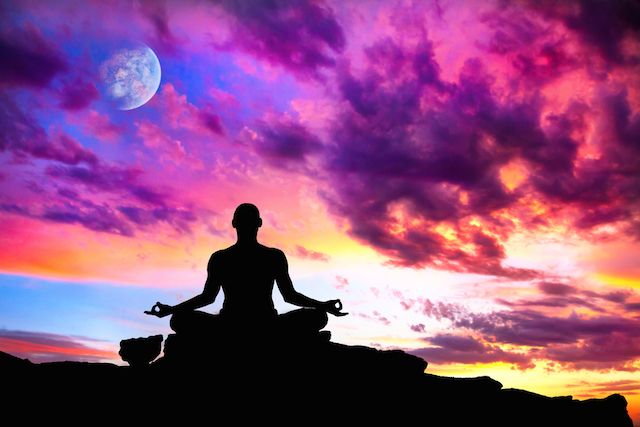
About 4 years ago, seventeen-year-old me was meditating on my living room couch, while my family was home. Although there was background noise and activity, I entered a deep meditative state of consciousness. This began with the numbness of my limbs—followed by the centralization of my thoughts—and ultimately, the absence of thought and loss of time perception. And then the next boundary was broken. I had obtained astral sight. With my eyes closed, and binaural beats bustling in my ears, I had seen and heard the room around me as If these perceptions had not previously been inhibited. This realization of course grasped my consciousness, and thought returned to me. I heard my little sister tell my dad that I was sleeping on the couch, and thought to myself "no I'm not", but I was not going to end this experience over something that trivial. I watched as my dad and my sister entered and exited the room over the course of the following hour. Ultimately, I accepted that I was not going to partake in astral travel during this session of meditation, and that I was bound to my body—sensing its surroundings. And so I awoke by choice.
I have been meditating frequently for eight years, but have had spiritual spiritual experiences throughout my life. Here are my suggestions for beginners interested in embarking on the path of meditation:
1: Lay down on a comfortable surface. Sitting upright is fine; I have always preferred laying down for long sessions. Have your legs open, slightly less than shoulder-width apart. Have your arms at your sides, not touching any part of your body.
2: Have your mouth closed—lips together, teeth apart. Breath slowly through your nose. Concentrate on each breath. Feel the air enter your nostrils and fill your belly. Feel the air exist your nostrils softly. Concentrate on your senses.
3: Listen to binaural beats or isochronic tones with headphones. This will facilitate brain waves conducive to higher consciousness.
4: Relax. Release all tension. Let your shoulders drop. Allow your arms and legs to sink into the surface you are on. Do not focus on meditating, or being anything, just be.
5: Remain Still. Resist any urge to move your body or open your eyes. You may experience a mild involuntary twitch or two after about ten minutes. This is fine. Your body is beginning to fall asleep. Allow it to; this is a good sign that you are relaxing well. After some more time your limbs will go numb and you will enter a state of consciousness that is removed from your body.
There are other ways of meditating. This is one method of practicing meditation that I endorse, especially for beginners. After some practice, binaural beats/isochronic tones are not necessary, although they are still enjoyable. Please share your experiences and recommendations :) Peaceful meditating!
Picture taken from the article: Why It's Okay to "Fail" at Meditation 90% of the Time, by Hunter Clarke-Fields. Reference Link: https://tinybuddha.com/blog/why-its-okay-to-fail-at-meditation-90-of-the-time/
Thanks for viewing the art on my blog Zach, you may be interested in seeing this video from John Kabat-Zin who is credited with bringing meditation into mainstream medicine, the talk is at Google for the employees to learn more about meditation.
Downvoting a post can decrease pending rewards and make it less visible. Common reasons:
Submit
Very interesting. Google is known for embracing mindfulness. They have actually had several speakers and writers teach seminars to their managers and it has been effective for them.
Downvoting a post can decrease pending rewards and make it less visible. Common reasons:
Submit
Thanks for sharing your experience, Zach :-)
Downvoting a post can decrease pending rewards and make it less visible. Common reasons:
Submit
I use YouTube videos a lot to help me meditate! Michael Sealey is awesome
Downvoting a post can decrease pending rewards and make it less visible. Common reasons:
Submit